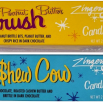Spelt (Triticum spelta)is indeed an ancient grain as it has been cultivated since 5000 BC. It is also known as Dinkel wheat or hulled wheat and is a subspecies closely related to the common wheat (Triticum aestivum). It was once an important staple in some parts of Europe during the Bronze Age to medieval times until it was supplanted by its cousin the common wheat, becoming somewhat of a relict crop in Northern Spain and Central Europe.
Delicious
Lately, however, spelt is making a comeback of sorts as it is now marketed as a health food. Spelt is a whole-food according to The Spelt Bakers. Unlike wheat where the bran and germ are removed together with their nutrients, spelt retains is vital substances as they are found in the kernel. Bread from is not only light and flavorful with that nutty taste, it is also highly nutritious.
Nutritious with Many Health Benefits
A cup of cooked spelt or around 194 grams has the following nutrients, as found in Helen West's article for Authority Nutrition:
Calories: 246
Carbs: 51 grams.
Fiber: 7.6 grams.
Protein: 10.6 grams.
Fat: 1.7 grams.
Manganese: 106% of the RDI.
Phosphorous: 29% of the RDI.
Vitamin B3 (Niacin): 25% of the RDI.
Magnesium: 24% of the RDI.
Zinc: 22% of the RDI.
Iron: 18% of the RDI.
Moderate Glycemic Index Rating - Although spelt is high in carbohydrates, it is also high in fiber, making it moderate in the glycemic index scale. This ensures no blood spikes happen, which is a common occurrence in regular refined wheat flour according to Authority Nutrition.
With possible Anti-Cancer properties - In addition, spelt excels in its Vitamin B17 (anti-carcinoma) content according to the Spelt Bakers. Vitamin B17 is considered by some to be a viable cancer treatment option according to Cancer Tutor.
Special Carbohydrates - Spelt contains special carbs that help in blood clotting and enhances the body's immune system, making it resistant to infection.
Can Easily Replace Wheat Flour as Carb Source
Spelt flour can easily replace wheat flour in any dish. In addition, the improved taste of bread and pastries would surely be a welcome change. However, both spelt also contains gluten like wheat, so spelt is not recommended for those with celiac disease and those with gluten intolerance in general.









